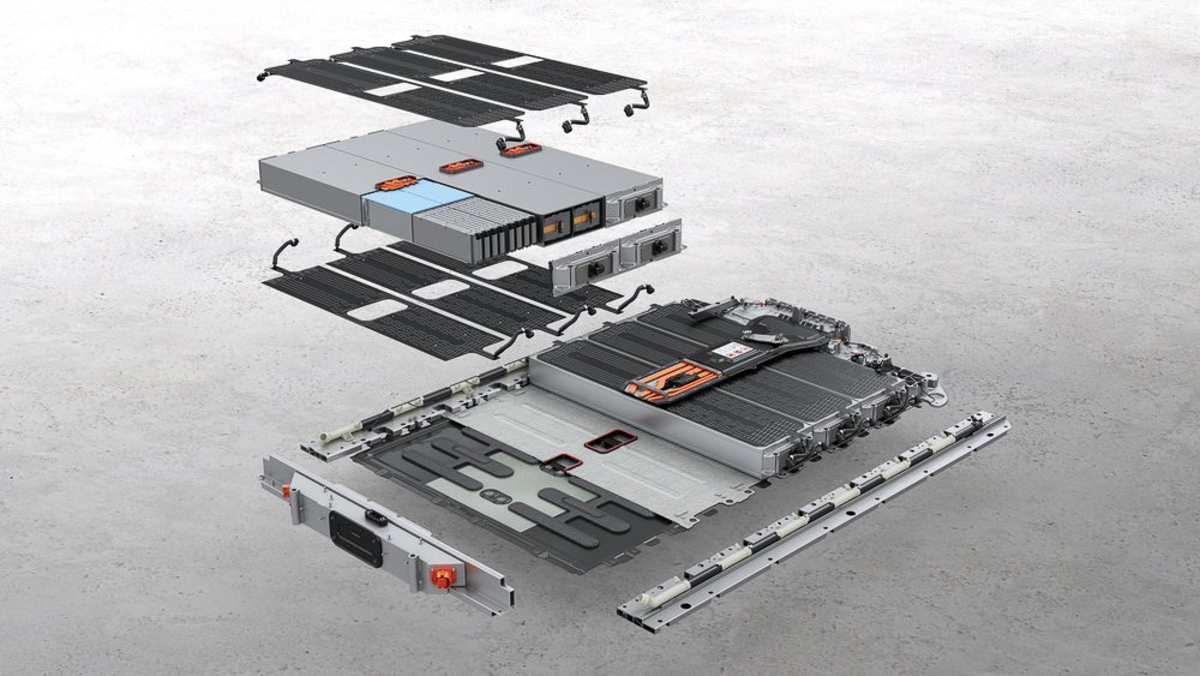Porsche Electric Cayenne Will Be An Absolute BEAST!
Support CleanTechnica's work through a Substack subscription or on Stripe.
Just a few days ago, Volkswagen Group was letting it be known that its was slowing its transition to electric cars due to a number of factors, not the least of which is the official hostility to clean transportation by the current US administration. The company warned its profits would probably take a significant financial hit this year and next as the EV revolution loses steam in some countries.
A big part of its announcement was that is will continue to build cars with infernal combustion engines longer than previously planned and would even develop new engines after the production cycle for its current engines ended. Porsche in particular seemed to be suffering the most from a change in customer attitudes about electric cars.
Amidst all that doom and gloom, the news today is about the electric Porsche Cayenne scheduled to debut later this year. Matthias Lederer, who is in charge of development verification and validation at Porsche, told Electrive recently the electric Cayenne is “not just a product update, but a new chapter in the model’s more than 20-year history. The Cayenne has always been our platform for innovation. The Cayenne Electric will define what performance means in the future!”
Is Lederer writing checks he can’t cash or is the upcoming electric Cayenne, known internally as the E4, truly exceptional? It is based on the same PPE electric car platform as the battery-powered Macan, but there are significant changes to the E4 Cayenne that will set it apart from the slightly smaller Macan.
All New Battery Technology

According to ArsTechnica, the “new” starts with the battery, which is rated at 113 kWh (108 kWh useable). Porsche says it is “functionally integrated” into the car. Unlike the Macan or Audi Q6, which are also built on the PPE platform, there is no frame surrounding the battery pack. Instead, there are six modules, each housed in its own protective case and bolted to the chassis. Inside each module are not the prismatic cells used by most Volkswagen Group models but pouch cells.
The company says the module cases provide the same stiffness as a battery frame but in a more compact format, which improves energy density by volume by around 7% compared to the battery in the Taycan. We always say that electric cars are still relatively new technology and what will be normal in 2030 hasn’t even been thought of yet. We take that back. What Porsche is doing today may very well be the shape of the future.
Inside each module are four small packs, ArsTechnica reports. Each module consists of eight pouch cells connected in series. The pack is able to DC fast charge at up to 400 kW, going from 10% to 80% in as little as 16 minutes. The charging curve actually slopes upward slightly at first and only begins to ramp down once the state of charge gets above 55% and stays at 270 kW until 70% SoC is reached. Porsche claims drivers can expect to add 30 kWh in the first five minutes.
Motors That Move You

Electrive clarifies that the front motor is virtually the same as the one used to power the front wheels of the electric Macan, but the rear motor is considerably upgraded from the one found in the Macan. Porsche engineers at the Weissach Development Center have designed a completely new motor for the rear of the Cayenne, one that is oil cooled instead of the liquid cooled jacket which is the norm for lesser vehicles.
Derived from Porsche’s experience in Formula E, the cooling oil flows through a thin gap between the stator and rotor. “This allows the heat to be dissipated directly where it’s generated,” Porsche electric drive developer Vivien Schreiber told Electrive. “This is much more efficient and accurate. It allows us to immediately dissipate the heat generated at high currents before it heats up other parts of the motor and we have to reduce power due to the temperatures.” The rear motor also benefits from a silicon carbide inverter that results in motor efficiency that reaches an astounding 98%.
“The cooling oil is about five times thinner than engine oil,” explains Schreiber. A conventional oil would not flow as well through the narrow gap between the stator and rotor. The heated oil then flows through a heat exchanger located at the front of the motor, which is connected to the vehicle’s thermal management system.
This is some seriously advanced engineering excellence going on at Weissach and is emblematic of the progress being made in electric car technology at Porsche and many other automakers around the world. EVs are getting better and better, which is why we here at CleanTechnica say: the future’s so bright, we got to wear shades!
Brutal Performance

The result of all this attention to the powertrain is a seriously quick grocery getter, at least in the Turbo trim. It will have 804 hp (600 kW) on tap all the time, but a push to pass button on the steering wheel raises that to 938 hp (700 kW) for 10 second bursts. Engage launch control and the power available when you press the exhilarator jumps to a thumping 1,072 hp (800 kW).
“Let me tell you, that feels brutal when you’re sitting in the passenger seat as the car hits 62 mph (100 km/h) in less than three seconds and carries on to 124 mph (200 km/h) in under eight seconds. This is a seriously quick SUV, despite a curb weight in excess of 5,500 lb (2.5 tonnes),” says Ars automotive editor Jonathan Gitlin.
“Regenerative braking performance is even more impressive than fast charging — this SUV will regen up to 600 kW, and the friction brakes won’t take over until well past 0.5 Gs of deceleration. Only around three percent of braking events will require the friction brakes to do their thing—in this case, they’re standard carbon ceramics that save weight compared to conventional iron rotors, which again translates to improved efficiency.”
Gitlin did have one nit to pick, however. “Sadly, you need to push the brake pedal to get all that regen. Deep in the heart of the company, key decision makers remain philosophically opposed to the concept of one-pedal driving, so the most lift-off regen you’ll experience will be around 0.15 Gs. I remain unconvinced that this is the correct decision; as a software-defined vehicle, it’s perfectly possible to have a one-pedal driving setting, and Porsche could offer this as an option for drivers to engage, like many other EVs out there.” Who knows? Maybe someone at Weissach will listen to that critique and do the right thing.
He said the car’s performance was “actually nauseating at times, given the brutality with which it can accelerate, brake, and change direction. There’s up to 5 degrees of rear axle steering.” Below 100 km/h the rear wheels turn opposite to the front wheels to reduce the car’s turning circle. Above that speed, they turn in the same direction to improve high speed lane change stability.
“The suspension combines air springs and hydraulic adaptive dampers, and like the Panamera we recently tested, comfort mode can enable an active ride comfort mode that counteracts weight transfer during cornering, accelerating, and braking to give passengers the smoothest ride possible.” The active suspension eliminates the need for anti-roll bars, which improves the car’s off-road capability.
Score One For The EV Revolution
Now here’s the payoff. Porsche originally planned to have the E4 replace the current E3 Cayenne in conventional and hybrid forms, but now it will continue to market the E3 a while longer and may even give it a complete refresh before retiring it a decade or so from now. If that sounds like bad news to you, consider this:
The electric Cayenne is the most powerful production Porsche ever with truly prodigious performance. Yet its suggested retail price reportedly will be virtually the same as the E3 conventional car. You see where this is going, don’t you?
If you can afford to drop $150,000 or so on a new SUV, chances are you will want the latest and greatest, not some warmed over technology that harks back more than 20 years to when the Cayenne first appeared. Advantage: battery electric, and by a wide margin. The E4 is the future; the E3 is the past. Which would you choose?
Sign up for CleanTechnica's Weekly Substack for Zach and Scott's in-depth analyses and high level summaries, sign up for our daily newsletter, and follow us on Google News!
Have a tip for CleanTechnica? Want to advertise? Want to suggest a guest for our CleanTech Talk podcast? Contact us here.
Sign up for our daily newsletter for 15 new cleantech stories a day. Or sign up for our weekly one on top stories of the week if daily is too frequent.
CleanTechnica uses affiliate links. See our policy here.
CleanTechnica's Comment Policy

